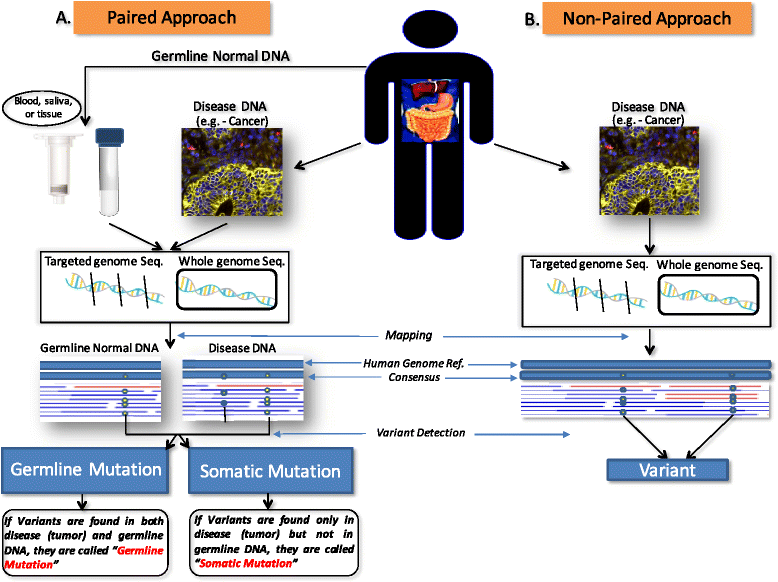Defining "mutation" and "polymorphism" in the era of personal genomics
- PMID: 26173390
- PMCID: PMC4502642
- DOI: 10.1186/s12920-015-0115-z
Defining "mutation" and "polymorphism" in the era of personal genomics
Abstract
Background: The growing advances in DNA sequencing tools have made analyzing the human genome cheaper and faster. While such analyses are intended to identify complex variants, related to disease susceptibility and efficacy of drug responses, they have blurred the definitions of mutation and polymorphism.
Discussion: In the era of personal genomics, it is critical to establish clear guidelines regarding the use of a reference genome. Nowadays DNA variants are called as differences in comparison to a reference. In a sequencing project Single Nucleotide Polymorphisms (SNPs) and DNA mutations are defined as DNA variants detectable in >1 % or <1 % of the population, respectively. The alternative use of the two terms mutation or polymorphism for the same event (a difference as compared with a reference) can lead to problems of classification. These problems can impact the accuracy of the interpretation and the functional relationship between a disease state and a genomic sequence. We propose to solve this nomenclature dilemma by defining mutations as DNA variants obtained in a paired sequencing project including the germline DNA of the same individual as a reference. Moreover, the term mutation should be accompanied by a qualifying prefix indicating whether the mutation occurs only in somatic cells (somatic mutation) or also in the germline (germline mutation). We believe this distinction in definition will help avoid confusion among researchers and support the practice of sequencing the germline and somatic tissues in parallel to classify the DNA variants thus defined as mutations.
Figures

References
MeSH terms
Substances
LinkOut - more resources
Full Text Sources
Other Literature Sources

